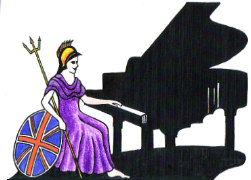Teachers, Accompanists and Piano Entertainers in the UK

UK Piano Page

Browse Locations England » Staffordshire » Tamworth
Tamworth, Staffordshire B79 0HP
England
I believe in teaching a solid foundation in good technique whilst studying a variety of musical styles - classical, jazz and pop/rock - to suit the ...
9 Rothersthorpe Avenue
Rothersthorpe Ind. Estate
Northampton, Northamptonshire NN4 8JH
England
LSM Pianos Ltd. was established back in 1979. We
Beach's Crescent
Little London
Tadley, Hampshire RG26 5ER
England
We are a specialist piano company supplying pianos
34 Wellhead Terrace
Ashington, Northumberland NE638PA
England
With a fine selection of only the best new pianos
Lenton Boulevard
Nottinghamshire NG7 2BY
England
Over many years, we have carefully selected what
2 Clay Bank Villas
Blidworth
Nottingham, Nottinghamshire NG21 0QS
England
Concert Quality rebuilt Grand pianos for the
Music Festival for performers and guests Our 10th
18-06-2022 12:30PM
The Morecambe Bay Piano Group was set up to extend
11-12-2021 01:00PM
The Morecambe Bay Piano Group was set up to extend
08-01-2022 01:00PM
The Morecambe Bay Piano Group was set up to extend
12-02-2022 01:00PM